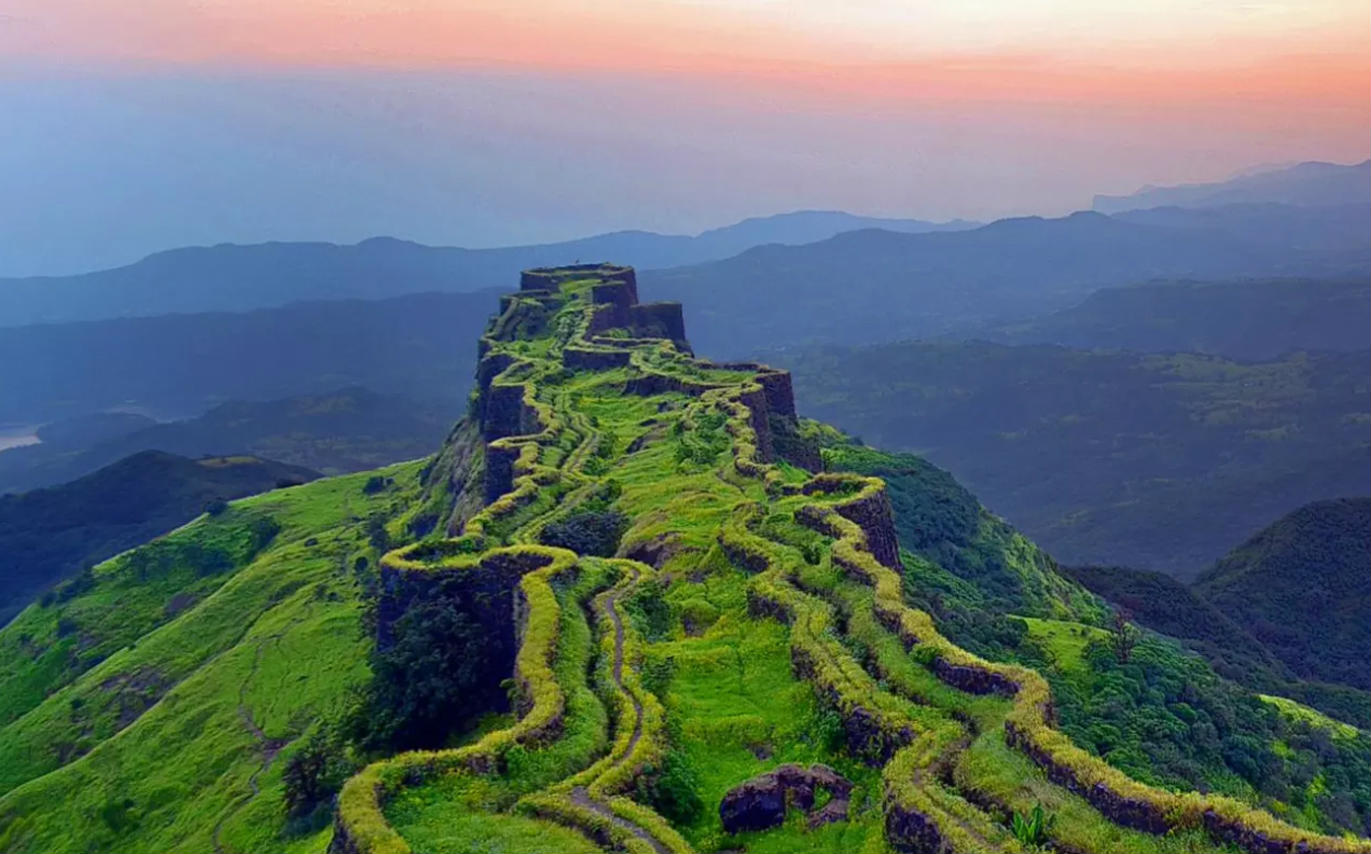The secrets of some of the most mysterious temples ever built. These are no ordinary places—they’re filled with ancient wonders, unexplainable phenomena, and stories that push the boundaries of logic. Whether you’re here for the history, the legends, or the mystery, these temples have it all.
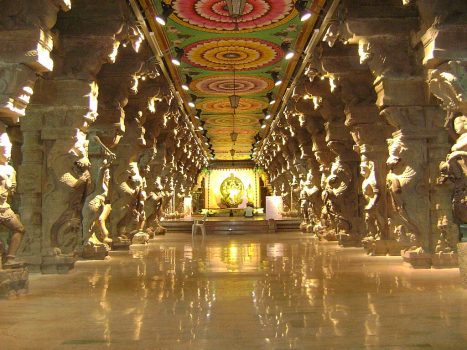 Pin
Pin Image source Instagram
Table of Contents
1. Jwala Devi, India
 Pin
Pin Photo by @loveandgraceofmaadurga
Jwala Devi Temple in Himachal Pradesh is home to a mysterious, eternal flame that has burned for centuries without a visible source of fuel. Scientists theorize natural gas seeps as the cause, but for devotees, it is a divine miracle. The temple is dedicated to Goddess Jwala, a powerful form of Shakti, and the flames are considered her eternal presence. The shrine is simple yet sacred, with multiple points where the flames emerge from the earth, flickering calmly against the odds. Visitors often leave mesmerized, feeling an unexplainable energy around the fire. Legends claim Emperor Akbar once tested the flame’s divinity by trying to extinguish it, but it reignited, proving its mystical power. The temple is surrounded by scenic hills, adding to its spiritual aura. People arrive here seeking blessings, answers, or just to experience the wonder of a flame that never dies, symbolizing unwavering faith and divinity.
2. Padmanabhaswamy Temple, India
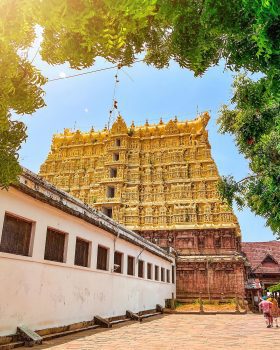 Pin
Pin Image by @anandrituraj
Padmanabhaswamy Temple in Kerala is not just a spiritual site but a fortress of intrigue. Famous for its unparalleled wealth, it houses six ancient vaults, five of which have been opened to reveal treasure worth billions in gold, jewels, and artifacts. However, Vault B remains sealed, shrouded in mystery and surrounded by myths. This vault, guarded by sacred symbols and legends of curses, has been left untouched for fear of invoking divine wrath. Stories tell of serpent guardians and spiritual warnings to anyone who attempts to open it. Devotees believe that the vault is protected by Lord Padmanabha himself, whose reclining idol dominates the temple. While the outer chambers speak of immense prosperity, the mystery of Vault B sparks endless fascination. Is it filled with unimaginable riches, or does it hold something beyond human comprehension? The enigma remains, drawing both believers and skeptics to this extraordinary temple.
3. Meenakshi Temple, India
 Pin
Pin Image by @tejas_trips
The Meenakshi Temple in Tamil Nadu is a masterpiece of Dravidian architecture, dedicated to Goddess Meenakshi and Lord Sundareswarar. Its towering gopurams, adorned with thousands of vibrant sculptures, create a visual feast that captivates visitors. The temple is not just a place of worship but a labyrinth of history and mystery. Beneath its grandeur lie underground tunnels and chambers whose full extent is yet to be mapped. Legends hint at secret passageways leading to treasures or hidden realms, sparking the imagination of visitors. The temple’s precise symmetry and intricate carvings are awe-inspiring, showcasing an advanced understanding of engineering and artistry. The Hall of Thousand Pillars is a marvel where every pillar is uniquely carved, showcasing scenes from mythology. Meenakshi Temple is more than a sacred site; it is a journey through time, culture, and divine craftsmanship, leaving everyone awestruck by its beauty and enigmatic charm.
4. The Hanging Pillar of Lepakshi, India
 Pin
Pin Image by @ancient.scientist
The Lepakshi Temple in Andhra Pradesh is a wonder of ancient Indian engineering. Among its many architectural marvels, the hanging pillar stands out, defying gravity and logic. This single stone column does not rest on the ground but hovers slightly above it, allowing visitors to pass a cloth underneath to confirm its suspension. Constructed during the Vijayanagara Empire, the temple is dedicated to Veerabhadra, a fierce form of Lord Shiva. The hanging pillar has baffled engineers and scientists, who have studied its alignment and weight distribution but found no clear explanation. Surrounding this incredible pillar are breathtaking carvings and murals that depict stories from Indian mythology. The temple complex exudes a mystical energy, blending art, spirituality, and unsolved riddles. For those visiting, the hanging pillar is more than an architectural curiosity—it is a testament to the ingenuity and spiritual dedication of ancient builders.
5. The Kailasa Temple, India
 Pin
Pin Image by @sanatanbhaarat
The Kailasa Temple in Maharashtra, part of the Ellora Caves, is a monument of unparalleled craftsmanship. This awe-inspiring structure was carved top-down from a single mountain over 1,200 years ago during the Rashtrakuta dynasty. Unlike traditional constructions, the temple was chiseled directly from the rock, showcasing incredible precision and creativity. Dedicated to Lord Shiva, the temple’s design replicates Mount Kailash, the deity’s mythical abode. It features intricate sculptures, massive pillars, and detailed panels depicting scenes from Hindu epics. Despite its grand scale, the temple appears impossibly cohesive, with no errors in its alignment or proportions. Historians remain puzzled about how ancient artisans achieved this feat using rudimentary tools. Legends suggest divine intervention due to the sheer complexity of the task. The Kailasa Temple stands as a testament to human perseverance and devotion, leaving every visitor in awe of its beauty and mystery.
6. Kamakhya Temple, India
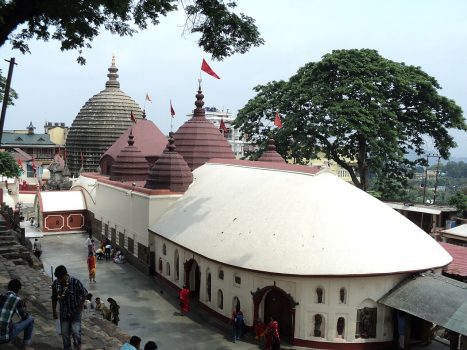 Pin
Pin Photo from Wikimedia Commons
The Kamakhya Temple in Assam stands out as a sacred site celebrating femininity and fertility in a deeply symbolic way. Dedicated to Goddess Kamakhya, it is unique for its annual phenomenon where the goddess is believed to menstruate. During this period, the water in the sanctum’s underground spring turns red, an occurrence that has intrigued both believers and skeptics. While some attribute the color to natural minerals, devotees see it as a divine event, a celebration of life and creation. The Ambubachi Mela, a grand festival during this time, draws thousands of pilgrims who honor the goddess’s creative energy. The temple’s architecture is striking, with its beehive-like dome and tantric carvings, adding to its mystique. Beyond the physical and spiritual experience, Kamakhya challenges taboos and offers a profound perspective on divinity, making it a deeply spiritual and culturally significant destination.
7. Amarnath Cave Temple, India
 Pin
Pin Photo from Wikimedia Commons
High in the Himalayan wilderness, the Amarnath Cave Temple is a sacred pilgrimage destination for Lord Shiva devotees. The temple is famous for its naturally forming ice Shiva Lingam, which appears inside the cave. What makes it extraordinary is its mysterious growth and shrinking, synchronized with the lunar phases. Accessible only through a challenging trek across rugged terrain, the journey itself is considered a test of devotion and endurance. The breathtaking views of snow-capped peaks and serene landscapes add to the spiritual experience. The cave is said to be the site where Shiva revealed the secret of immortality to Goddess Parvati. Devotees brave harsh weather conditions and high altitudes to witness this awe-inspiring phenomenon. The Amarnath Cave Temple is more than a pilgrimage; it’s a blend of natural wonder, devotion, and the human spirit’s perseverance in seeking the divine.
8. Konark Sun Temple, India
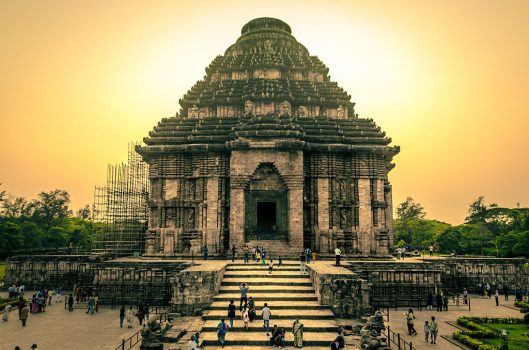 Pin
Pin Photo from Wikimedia Commons
The Konark Sun Temple in Odisha is a marvel of ancient engineering and artistic brilliance. Built in the 13th century, the temple was designed to function as a massive sun dial, with intricate carvings that marked the movement of the sun throughout the day. Its chariot-like structure, complete with 24 intricately carved stone wheels, symbolizes the sun’s journey across the sky. At its peak, the temple radiated with magnetic energy, believed to be generated by a giant iron rod inside. Over time, the structure was damaged, and its precise timekeeping function ceased. Despite its partial ruin, the temple remains awe-inspiring, with sculptures depicting celestial beings, animals, and scenes of everyday life. Konark’s grandeur speaks to the advanced scientific understanding and artistic excellence of its builders, making it a timeless monument to human creativity and the mysteries of the past.
9. The Floating Stone Bridge of Rameswaram, India
 Pin
Pin Photo from Wikimedia Commons
The legendary Ram Setu, or Adam’s Bridge, near Rameswaram, is a marvel steeped in myth and mystery. According to the Ramayana, Lord Rama’s army constructed the bridge with floating stones to reach Lanka and rescue Sita. What’s astonishing is that stones believed to be from this bridge still float on water, baffling scientists and fueling debates about their origin. Some argue that it’s a natural formation, while others see it as evidence of divine engineering. The bridge stretches between India and Sri Lanka, partially submerged under the sea. Pilgrims and adventurers visit Rameswaram to witness these floating stones and walk in the footsteps of legend. Beyond its mythical significance, the Ram Setu represents the enduring connection between faith, science, and cultural heritage. It stands as a timeless reminder of stories that transcend generations, inspiring awe and devotion in equal measure.
10. The Great Pyramid Temple of Chichen Itza, Mexico
 Pin
Pin Photo from Wikimedia Commons
The Temple of Kukulcán at Chichen Itza is a testament to the Mayans’ unparalleled architectural and astronomical prowess. This stepped pyramid, rising 98 feet into the sky, is precisely aligned with celestial events. During the spring and autumn equinoxes, the setting sun creates the illusion of a serpent slithering down the pyramid’s staircase, symbolizing the feathered serpent deity, Kukulcán. The pyramid’s construction reflects the Mayans’ advanced understanding of geometry, acoustics, and astronomy. Every clap near the pyramid produces an echo resembling a bird’s chirp, adding to its mystery. Beneath the structure lies a cenote, a sacred water-filled sinkhole, further enhancing its spiritual significance. Despite centuries of erosion, the pyramid retains its grandeur, captivating historians, archaeologists, and tourists. The Temple of Kukulcán is more than an architectural wonder; it’s a glimpse into a civilization that harmonized science, art, and spirituality with unmatched precision.
11. Brihadeeswarar Temple, India
 Pin
Pin Photo from Wikimedia Commons
The Brihadeeswarar Temple in Tamil Nadu, a UNESCO World Heritage Site, showcases ancient engineering at its finest. Its massive dome, made from a single block of granite weighing an estimated 80 tons, appears almost weightless as it rests atop the temple’s towering structure. What’s truly baffling is how this colossal stone was transported to such a height over 1,000 years ago. Without modern cranes or machinery, it’s believed the builders used a 6-kilometer-long inclined ramp to roll the stone into place. The temple, built during the Chola dynasty, is a masterpiece of precision and symmetry, with intricate carvings adorning its walls. Despite its immense size and weight, the dome seems to blend effortlessly with the structure, creating a sense of balance and harmony. The Brihadeeswarar Temple remains an architectural enigma, leaving modern engineers in awe of the ingenuity and vision of ancient builders.
12. Jagannath Temple, India
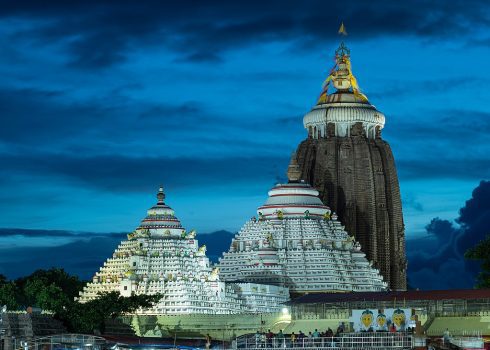 Pin
Pin Photo from Wikimedia Commons
The Jagannath Temple in Odisha is a site where nature and architecture seem to play by their own rules. One of its most intriguing features is the flag atop the temple, which mysteriously flutters against the direction of the wind. Equally perplexing is the temple’s shadow, which is said to never fall on the ground at any time of day, regardless of the sun’s position. Built in the 12th century, this sacred temple dedicated to Lord Jagannath also has other mysteries, such as its unique cooking technique, where pots stacked one over the other are cooked simultaneously, with the topmost pot finishing first. The temple’s aura, combined with these unexplainable phenomena, has intrigued both scientists and spiritual seekers. The Jagannath Temple continues to draw millions of devotees and curious minds, standing as a symbol of divine mysteries that transcend human understanding.
13. The Hypogeum of Ħal-Saflieni, Malta
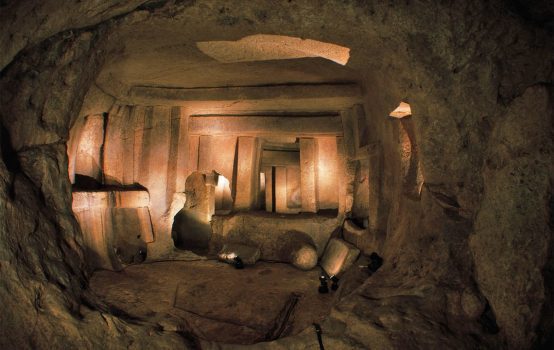 Pin
Pin Photo from MyMalta
The Hypogeum of Ħal-Saflieni in Malta is an ancient underground temple that redefines acoustic brilliance. Carved entirely out of limestone over 5,000 years ago, this subterranean marvel is designed with an understanding of sound that seems almost futuristic. In certain chambers, sound resonates perfectly, creating vibrations that can be felt throughout the structure. The effect is so profound that chanting or speaking feels amplified, as if enveloping the entire space. Archaeologists believe this was intentional, designed for rituals or meditative practices. The Hypogeum also features intricately carved walls, burial chambers, and mysterious symbols, hinting at its multifaceted purpose. How the ancient builders achieved such acoustic precision without modern technology remains a mystery. Visiting the Hypogeum is like stepping into a world where sound becomes tangible, leaving an indelible impression of humanity’s ancient ingenuity and connection to the spiritual realm.
14. Kedareshwar Cave Temple, India
 Pin
Pin Photo from Wikimedia Commons
Hidden in the Himalayas, the Kedareshwar Cave Temple is a spiritual sanctuary surrounded by natural beauty. At its heart lies a phenomenon that defies explanation—an ice lingam that appears to float on water. This naturally occurring formation, dedicated to Lord Shiva, is a symbol of purity and divine energy. Visitors to the temple often describe an intense spiritual connection, amplified by the serene and otherworldly atmosphere of the cave. The icy cold temperatures, combined with the mystical aura of the lingam, create an experience that feels almost transcendent. Legends say the lingam’s presence blesses devotees with a sense of peace and rejuvenation. The trek to reach this sacred site is challenging, but for those who make the journey, the sight of the floating ice lingam is unforgettable, offering a rare glimpse into nature’s mysteries and spiritual wonder.
15. Tanah Lot Temple, Indonesia
 Pin
Pin Photo from Wikimedia Commons
Tanah Lot Temple in Bali is a strikingly beautiful shrine perched atop a rocky outcrop surrounded by the sea. During high tide, the temple appears to float, creating a mesmerizing scene against the backdrop of crashing waves. This sacred site, dedicated to sea gods, is believed to be protected by venomous sea snakes that guard it from intruders. Legends say that the temple’s rock base was created by a holy priest using his spiritual powers. At low tide, visitors can walk across the exposed seabed to reach the temple, adding to the sense of adventure and mystique. The sunsets here are breathtaking, casting a golden glow over the temple and the surrounding waters. Tanah Lot isn’t just a spiritual center—it’s a visual masterpiece, blending natural beauty with cultural heritage. Its timeless charm continues to captivate hearts, making it one of Bali’s most iconic landmarks.
These amazing temples and sacred places show the brilliance, faith, and creativity of people from ancient times. They challenge what we know, connect us to nature, and bring people closer to spiritual beliefs. These places remind us that some things are better left unexplained, letting their magic speak for itself. Millions visit these sites not just for worship but to feel their power and beauty, leaving with memories that last forever.








